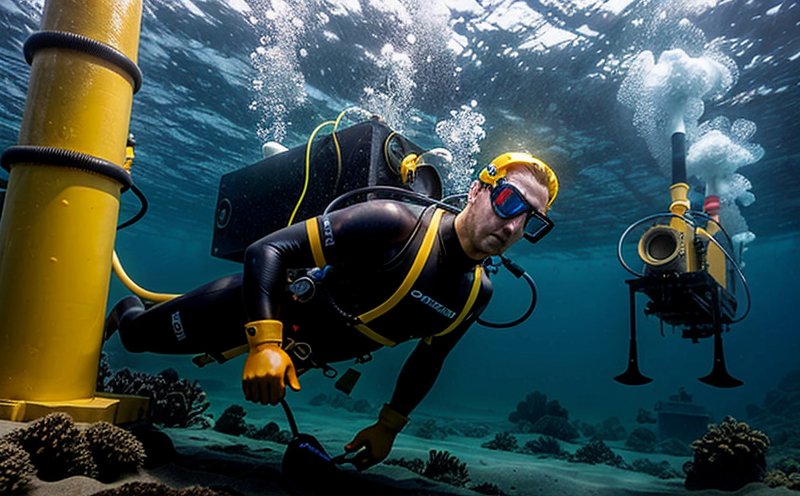ISO 19901-6 Marine Operations Testing of Subsea Equipment
The ISO 19901 series provides a comprehensive set of guidelines for the design, construction, and operation of marine equipment. Specifically, ISO 19901-6 focuses on testing subsea equipment used in marine operations. This service ensures that subsea equipment meets stringent performance requirements to guarantee safety, reliability, and efficiency in maritime environments.
Subsea equipment operates under extreme conditions, including high pressure, low temperature, and corrosive fluids. ISO 19901-6 defines standardized testing methods to assess the integrity of these components before deployment. The service covers a range of tests designed to simulate real-world operating conditions, ensuring that subsea equipment can withstand the harshest environments.
The testing process involves several critical stages:
- Initial inspection and documentation
- Material compatibility checks
- Pressure testing to ensure structural integrity
- Corrosion resistance evaluation
- Temperature stability assessment
- Hydraulic and electrical performance testing
These tests are crucial for ensuring that subsea equipment functions correctly under marine operations. The service also includes a detailed review of the test results, which are then compared against international standards such as ISO 19901-6 to ensure compliance.
The testing process is designed to be thorough and rigorous, covering all aspects of the equipment's performance. This ensures that any potential issues are identified early in the development or deployment phase, minimizing risks and costly failures at sea.
For quality managers and compliance officers, this service provides peace of mind by ensuring that subsea equipment meets international standards. R&D engineers benefit from detailed insights into how their designs perform under real-world conditions, while procurement teams can verify the reliability of the components they source.
The testing process is not just about compliance; it's also about innovation and improvement. By testing subsea equipment to these stringent standards, manufacturers can identify areas for optimization and enhance the overall performance of their products.
International Acceptance and Recognition
The ISO 19901-6 standard is widely recognized and accepted across the globe. It is used by manufacturers, suppliers, and operators in various sectors of the maritime industry. The standard ensures that subsea equipment meets international standards for safety, reliability, and efficiency.
- Oil and gas sector
- Renewable energy sector
- Military and defense sector
- Civil engineering sector
- Research institutions
Environmental and Sustainability Contributions
The ISO 19901-6 standard plays a crucial role in promoting environmental sustainability. By ensuring that subsea equipment is reliable and safe, it reduces the risk of accidents and environmental damage. This contributes to a more sustainable approach to marine activities.
Compliance with this standard also helps reduce operational costs by minimizing downtime due to failures. Additionally, the use of ISO 19901-6 encourages innovation in subsea equipment design, leading to more efficient and environmentally friendly solutions.
Competitive Advantage and Market Impact
Compliance with ISO 19901-6 provides a significant competitive advantage. It demonstrates a commitment to quality and safety, enhancing the market reputation of companies that adhere to this standard.
The standard ensures that subsea equipment meets international standards for safety, reliability, and efficiency. This guarantees that the equipment can operate safely and efficiently under extreme conditions, reducing the risk of accidents and environmental damage.
By using ISO 19901-6, companies can differentiate themselves in a crowded market, offering products that are not only reliable but also environmentally responsible. This can lead to increased customer trust and loyalty, as well as enhanced brand reputation.





